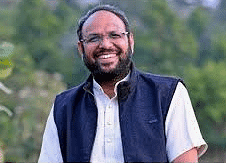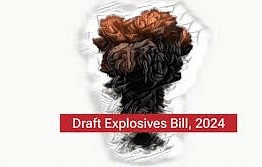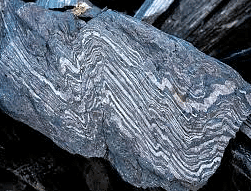Weekly Current Affairs (1st to 7th May 2024) | General Test Preparation for CUET UG - CUET Commerce PDF Download
About Alok Shukla's Goldman Environmental Prize 2024

- Alok Shukla, a 43-year-old environmental activist from Chhattisgarh, India, has been honored with the prestigious Goldman Environmental Prize for 2024.
- Shukla successfully led a grassroots campaign to safeguard 445,000 acres of the biodiverse Hasdeo Aranya forests from potential development of 21 proposed coal mines.
Hasdeo Aranya: A Biodiversity Hotspot
- The Hasdeo Aranya forests cover an area of 657 square miles and provide a crucial habitat for various endangered species like tigers, Asian elephants, leopards, and sloth bears.
- This region supports a rich biodiversity with 92 bird species and 167 rare and medicinal plant species.
- Approximately 15,000 Indigenous people (Adivasi) rely on these forests for their sustenance and cultural heritage.
Coal Reserves and Mining Threats
- The Hasdeo Aranya forests are situated atop one of India's largest coal reserves, estimated at 5.6 billion tons.
- Despite being designated as a "no-go" zone by the environment ministry in 2010, successive governments have made attempts to commence mining activities.
- Adani Enterprises, a multinational mining corporation, obtained approvals to establish five coal mines in the area between 2011 and 2015.
The Save Hasdeo Movement
- Alok Shukla serves as a convenor of the Save Chhattisgarh Movement and is a founding member of the Save Hasdeo Aranya Resistance Committee.
- He mobilized local communities and villages to oppose the proposed coal mines, organizing protests, marches, and sit-ins.
- Shukla's advocacy gained widespread traction on social media through the use of the hashtag #SaveHasdeo.
Impact and Recognition
- Shukla's initiatives resulted in the revocation of 21 coal blocks by the state government in July 2022.
- The Hasdeo movement has emerged as a beacon for environmental justice in India, fostering unprecedented national and regional solidarity.
- The Goldman Environmental Prize acknowledges Shukla's leadership and commitment to safeguarding the Hasdeo Aranya forests and upholding the rights of Indigenous communities.
About The Goldman Environmental Prize
- Founded in 1989 by Richard and Rhoda Goldman, the Goldman Environmental Prize, known as the "Green Nobel," is bestowed annually upon grassroots environmental activists hailing from six continents.
- Recipients from various geographical categories are awarded $200,000 each and global recognition for their environmental advocacy efforts.
- A distinguished international jury selects the prize winners based on their substantial and enduring contributions, often undertaken at significant personal risk.
Additional Facts
- India stands as the world's second-largest coal consumer and producer, with a production of 761 million tons in 2022-2023.
- Over 21% of India's coal output originates from Chhattisgarh.
- The Hasdeo Aranya forests function as a catchment area for the Hasdeo River, which flows into the Mahanadi River and irrigates 741,000 acres of farmland.
- Shukla's decade-long endeavors culminated in the cancellation of these mining ventures by the Indian government in July 2022, preserving one of the nation's largest contiguous forest regions.
LOQU: IIT-G's Groundbreaking Speech Tech for the Speechless
- Researchers at the Indian Institute of Technology Guwahati (IIT-G) have made a significant advancement in speech technology with the creation and patenting of "LOQU." This innovative method directly generates human speech signals from vocal cord vibration signals, offering new possibilities for individuals with speech impairments and medical applications.
Speech Production and Vocal Fold Vibration
- Speech production initiates with airflow from the lungs passing through the windpipe, aided by the larynx or voice box.
- Inside the larynx, vocal cords or vocal folds are controlled by the glottis, regulating airflow between the lungs and mouth.
- During speech, vocal folds vibrate due to movement of intrinsic laryngeal muscles, producing sounds that propagate through the vocal tract, forming "voice."
About LOQU Technology
- Led by Prof. Samarendra Dandapat and Dr. L.N. Sharma, the IIT-G team introduced "LOQU," derived from the Latin term for "To speak or talk."
- LOQU technology captures vocal fold movements without invasive measures, utilizing sensors positioned on the throat.
- The process involves recording vocal fold vibrations via non-invasive sensors and electronically processing these signals to create speech harmonics.
Reconstructed Speech Signals and Applications
- Speech signals reconstructed through LOQU have demonstrated clarity and comparability to conventional speech in extensive comparative assessments.
- These outcomes hold vast potential for individuals encountering speech challenges, providing an effective alternative to traditional microphones and enhancing speech intelligibility.
- The innovative technology aims to empower those in need and stimulate impactful advancements in the medical and communication sectors.
Prototype and Patented Technology
- The LOQU prototype has been created on a small scale in a laboratory at a cost below Rs. 2,000.
- The technology has been patented (Indian Patent No.: 510923, Grant Date: 15/02/2024, App No. 201831006870). Ongoing clinical trials seek to further confirm its efficacy and explore diverse applications in medical and communication realms.
Additional Facts
- Speech impairments can arise from various conditions, such as apraxia-related mutism, where individuals may experience normal vocal fold vibration without sound production due to coordination issues in tongue or throat muscles.
- Traditional methods of speech reconstruction often involve invasive procedures or the utilization of external microphones, which may not be suitable for all individuals with speech impairments.
Draft Explosives Bill, 2024

- In recent news, the government plans to introduce the Draft Explosives Bill, 2024, to replace the Explosives Act, 1884.
- The Department for Promotion of Industry and Internal Trade (DPIIT) aims to increase fines for regulation violations and streamline licensing procedures.
Introduction
- Explosives such as gunpowder, nitroglycerin, and picric acid are tightly regulated due to their volatile nature and potential risks to public safety.
Proposed Provisions of the Explosives Bill 2024
- The Union government will appoint the authority responsible for issuing, suspending, or revoking licenses under the new Explosives Bill 2024.
- The Petroleum and Explosives Safety Organisation (PESO) under DPIIT currently regulates licenses related to explosives.
About Petroleum and Explosives Safety Organisation (PESO)
- PESO is recognized for its excellence in safety concerning hazardous substances for over a century.
- Aside from enforcing safety regulations, PESO has played a crucial role in examining explosives, including those of national significance from historical events.
Enhanced Fines and Penalties
- The draft bill proposes stricter consequences for violations, including imprisonment up to three years, a fine of Rs 1,00,000, or both for manufacturing, importing, or exporting explosives.
- These penalties mark an increase from the existing Explosives Act, which mandates a three-year prison term and a Rs 50,000 fine for comparable infractions.
Regulatory Oversight and Compliance
- The licensing authority will specify the permitted quantity of explosives for manufacturing, selling, or transporting within a designated period to ensure adherence to safety protocols.
- This stringent oversight targets compliance with safety regulations and aims to prevent unsafe handling or unauthorized usage of explosives.
About Historical Background of the Explosives Act, 1884
- Enacted during British colonial rule, the Explosives Act of 1884 aimed to regulate the production, storage, and use of explosives in India.
- Over time, the Act underwent multiple amendments to address evolving challenges and update safety standards in line with technological advancements, ensuring operational safety within the industry.
Oldest Evidence of Earth’s Magnetic Field Found in Rocks

- Geologists from MIT and Oxford University made a groundbreaking discovery in 3.7 billion-year-old rocks from Greenland’s Isua Supracrustal Belt, revealing the earliest evidence of Earth’s magnetic field.
- This finding implies that Earth might have been habitable earlier than previously believed, with a stable magnetic shield being a vital component.
- The magnetic field serves to protect the Earth from harmful solar radiation and cosmic rays, maintains the atmosphere, and enables the presence of liquid water essential for life.
- Through an analysis of the magnetic properties and alignment of iron-oxide minerals, researchers were able to ascertain the strength of the ancient magnetic field, extending its known existence by 200 million years.
Importance of Earth’s Magnetic Field
- Earth’s magnetic field is indispensable in shielding the planet from detrimental solar radiation and cosmic rays.
- It plays a crucial role in sustaining a stable atmosphere and facilitating the existence of liquid water, which is vital for supporting life as we know it.
- An understanding of the historical development and potency of Earth’s magnetic field offers valuable insights into the planet’s evolution and its potential to harbor life.
Study Methodology
- The research team gathered rock samples from Greenland's Isua Supracrustal Belt, a region renowned for its ancient rock formations.
- By scrutinizing the magnetic characteristics of these rocks, particularly the alignment of iron-oxide minerals, the researchers were able to confirm the presence of a magnetic field dating back 3.7 billion years.
- In laboratory settings, the samples were demagnetized and compared against established field strengths, ultimately unveiling the intensity of the ancient magnetic field.
Implications for Habitability and Life
- The unearthing of a 3.7-billion-year-old magnetic field proposes that Earth’s conditions could have been conducive for life at an earlier point than previously assumed.
- The presence of a stable magnetic shield may have been instrumental in fostering a hospitable environment for life forms to emerge.
- This revelation also has implications for the quest for extraterrestrial life, hinting that a robust magnetic field could be pivotal in nurturing complex life.
Future Research and Significance
- This research paves the way for fresh investigations into the evolution of Earth’s magnetic field and its influence on planetary habitability.
- An understanding of the magnetic field's evolution over billions of years can offer crucial insights into the planet’s long-term sustainability and resilience.
- Further exploration of ancient rocks and their magnetic imprints has the potential to unveil additional clues about Earth’s early history and the emergence of life.
Indian Navy's Modernization Plan with Steam to Diesel Conversion
- The Indian Navy has embarked on a modernization initiative to upgrade the life, maintenance support, and capability of its warships by transitioning their propulsion systems from steam to diesel.
- A contract valued at Rs. 313.42 crore was executed with Cochin Shipyard Limited (CSL) by the Ministry of Defence on 16 October 2023 to kickstart the mid-life upgrade and re-powering of INS Beas, the foremost vessel of the Brahmaputra-class frigates slated for this conversion.
INS Beas: The Flagship of the Conversion Project
- The conversion process of INS Beas was set in motion in early April 2024 and is anticipated to wrap up in approximately two years.
- Following the completion of upgrades in 2026, INS Beas will be reintegrated into the active Indian Navy fleet equipped with modernized weaponry and enhanced combat capabilities.
Benefits of Diesel Propulsion
- The shift from steam to diesel propulsion is projected to notably prolong the operational lifespan of the warships.
- For instance, INS Beas, which might have faced decommissioning in 10 to 12 years, is now anticipated to serve actively for over 20 years post-conversion.
- Diesel-powered vessels offer simplified maintenance procedures and improved working conditions for the crew by eliminating issues like steam leaks and high temperatures connected with aged steam propulsion systems.
Indigenous Development of Marine Diesel Engines
- Within the modernization scheme, the Indian Navy is placing emphasis on the domestic development of marine diesel engines categorized under Make-I.
- Kirloskar Oil Engines Ltd and Garden Reach Shipbuilders and Engineers Ltd (GRSE) are spearheading this initiative. Upon successful development, orders for 30 diesel engines are anticipated.
- These engines are slated to be incorporated into upcoming corvettes and other naval vessels, fortifying the Indian Navy's capabilities and fostering self-sufficiency in defense manufacturing.
Archaeological Discovery in Serbia
- Archaeologists have recently found a prehistoric settlement around the Tamiš River in northeastern Serbia, dating back 7000 years.
- The settlement, likely from the late Neolithic period, covers approximately 11-13 hectares and is enclosed by four to six ditches.
- Using geophysical techniques, researchers have uncovered artifacts linked to the Vinča culture, recognized for establishing large settlements in southeastern-central Europe.
- The discovery is significant as few extensive Late Neolithic settlements have been pinpointed in the Serbian Banat region.
- The settlement close to Jarkovac village showcases influences from the regional Banat prehistoric culture, providing insights into ancient societies in the area.
Significance of the Discovery
- This finding is expected to offer more insights into early human history, knowledge dissemination, and technologies in Southeast Europe.
- Research, spearheaded by Martin Furholt from the Institute of Prehistoric and Protohistoric Archaeology at Kiel University in Germany, aims to understand social inequalities and early technologies in Europe.
- Further investigations are underway to unveil more about the prehistoric past of the region.
About Serbia
- Serbia, officially the Republic of Serbia, is positioned in Southeast Europe, bordered by Hungary, Romania, Bulgaria, North Macedonia, Croatia, and Bosnia and Herzegovina.
- Belgrade serves as the capital city, with over 7 million inhabitants known for their cultural heritage in music, literature, and art.
- Serbian is the official language, and the currency used is the Serbian dinar.
- The country is affiliated with global organizations such as the United Nations, World Trade Organization, and Council of Europe.
About Vinča Culture
- The Vinča culture thrived in Southeastern Europe, particularly in modern-day Serbia, during 5700-4500 BC.
- Renowned for advanced agricultural practices and distinctive pottery styles, they are considered one of the earliest European civilizations.
- They resided in large settlements, engaged in farming and animal husbandry, and developed a primitive form of writing.
- The decline of the Vinča culture around 4500 BC remains a mystery, and their artifacts have been unearthed across the Balkans.
About Banat Culture
- Banat culture encompasses the cultural heritage of the Banat region spanning Romania, Serbia, and Hungary.
- This diverse culture reflects a blend of Romanian, Serbian, Hungarian, and German influences, shaped by centuries of coexistence and cultural interchange.
- Traditional Banat music, dance, cuisine, and crafts are integral to this culture, enriched by its history under various rulers including Austrian, Ottoman, and Hungarian dominions.
- Banat culture is characterized by hospitality, customary festivities, and a strong sense of community.
India, Kenya to Discuss Cheetah Sourcing for Wildlife Sanctuary

- India is interested in obtaining cheetahs from Kenya for the next phase of Project Cheetah.
- A delegation from Kenya will be visiting India soon to talk about the potential translocation, including the number of cheetahs that could be transferred.
- The Gandhi Sagar wildlife sanctuary in Madhya Pradesh has been chosen as the site for this part of the project.
- Under Project Cheetah, the goal is to introduce 8 to 14 cheetahs each year for five years, depending on availability.
- Currently, there are 27 cheetahs in Kuno – 13 adults and 14 cubs, with 10 cheetahs having passed away due to illnesses and infections.
- India is considering Kenya as a potential source of cheetahs due to the high mortality rate.
- The Kenyan delegation's visit may involve evaluating the preparations made by the Madhya Pradesh forest department at the Gandhi Sagar sanctuary.
About Project Cheetah
- Project Cheetah is an innovative initiative by the Indian government to reintroduce cheetahs to the country following their extinction in 1952.
- In September 2022, eight African cheetahs were relocated from Namibia to Kuno National Park in Madhya Pradesh, a significant achievement in wildlife conservation.
- The project's objective is to establish a sustainable cheetah population, revive the species' historical range, and enhance India's ecosystems' biodiversity.
- Intensive monitoring, habitat management, and community involvement are essential aspects of this ambitious project.
FLiRT: New COVID-19 Variants Increase Concern in US
- A cluster of COVID-19 mutations within the Omicron JN.1 lineage, recognized as FLiRT, comprising the KP.2 and KP 1.1 variants, is swiftly spreading in the United States. These variants exhibit new genetic changes that enhance their transmissibility.
- Media reports indicate that the symptoms closely resemble those of other Omicron infections, and hospitalization rates remain low. KP.2 has emerged as the dominant variant compared to JN.1, with KP.1.1 also circulating but to a lesser extent.
Understanding FLiRT
- The name "FLiRT" is derived from the scientific designations of the mutations, as explained by the Infectious Disease Society of America.
About Omicron JN.1 Lineage
- The Omicron JN.1 lineage is a mutation of the SARS-CoV-2 virus, stemming from the Omicron variant, also known as B.1.1.529. Chinese researchers identified this lineage, hence the designation "JN.1".
- This variant is distinguished by a set of mutations that set it apart from the primary Omicron lineage. However, the severity, transmissibility, and potential resistance to vaccines of this variant are yet to be fully understood, necessitating ongoing monitoring and research efforts.
About Infectious Disease Society of America
- The Infectious Disease Society of America (IDSA) is a medical organization representing healthcare professionals specializing in infectious diseases.
- Established in 1963 and headquartered in Virginia, USA, the IDSA engages in research, education, and the formulation of treatment guidelines for infectious diseases.
- The organization plays a crucial role in shaping policies and standards aimed at combating and managing infectious diseases, including global health crises like the COVID-19 pandemic.
- Advocating for evidence-based public health policies, promoting responsible antimicrobial use, and ensuring the availability of well-trained infectious disease experts are key objectives of the IDSA.
Centre Invites Stakeholders' Views on Proposed Dog Breed Ban

- The Indian government is seeking feedback on a potential prohibition regarding the import, breeding, and sale of 24 dog breeds.
- Suggestions are being requested concerning a previous order issued on March 12, which singled out breeds like Pitbull Terriers, Rottweilers, and Mastiffs as hazardous and suggested their restriction.
- The initial order was challenged by non-governmental organizations, leading to its suspension by the Delhi High Court due to the absence of prior consultations.
- Stakeholders are urged to provide input on this matter by June 1, with an emphasis on presenting arguments supported by scientific rationale.
- The reconsideration of the ban was prompted by objections from the Karnataka High Court and compliance with the Delhi High Court's directives.
- The Ministry's March 12 order will remain inactive until a fresh decision is made.
About Dangerous Varieties of Dogs
While any dog can exhibit aggression if mistreated or inadequately trained, certain breeds are often associated with increased aggression due to their size, strength, and historical roles.
Some breeds frequently discussed in relation to potentially dangerous dogs include:
- Pit Bulls (American Pit Bull Terrier, American Staffordshire Terrier, Staffordshire Bull Terrier)
- Rottweilers
- German Shepherds
- Doberman Pinschers
- Chow Chows
- Siberian Huskies
- Alaskan Malamutes
- Great Danes
- Presa Canarios
- Akitas
It is crucial to recognize that a dog's behavior is primarily shaped by factors like training, socialization, and individual temperament.
While these breeds are often associated with aggression, it is essential to remember that many dogs from these breeds can be gentle, well-behaved, and excellent companions when raised with care and responsibility.
Goldene: Swedish Scientists Create First Freestanding 2D Gold Sheet
Scientists at Sweden's Linköping University have achieved a groundbreaking milestone by producing a pioneering free-standing gold sheet that is merely one atom thick, referred to as "goldene." This innovative 2D sheet, akin to graphene, signifies a remarkable advancement as it represents the initial instance of a metal being converted into a 2D form.
Production Process
- To fabricate goldene, researchers initially placed a silicon atomic layer between titanium carbide layers. Subsequently, gold was applied onto this structure, facilitating the substitution of gold atoms for silicon atoms. Eventually, the titanium carbide layers were eliminated through a chemical procedure, culminating in the creation of an exceedingly thin, independent gold layer.
Potential Benefits
- Electronics Industry: Gold is extensively utilized in the electronics sector owing to its exceptional electrical conductivity. The advent of goldene has the potential to transform this industry by substantially reducing the gold quantities necessary for devices.
- Energy-Efficient Catalysis: Goldene could play a pivotal role in energy-efficient catalytic processes like carbon dioxide conversion, hydrogen generation, and water purification.
Future Research
- Researchers are presently investigating the feasibility of generating 2D sheets of alternative metals such as iridium and platinum utilizing the same methodology. A successful outcome could herald an unprecedented revolution in material engineering.
BSF: New Guidelines for Non-Gazetted Officers
- The Border Security Force (BSF) has introduced fresh directives, as outlined by the Directorate General (DG), aimed at enhancing job satisfaction for non-gazetted officers within the force.
- In response to a significant rise in early retirements, with Ministry of Home Affairs data indicating over 46,000 personnel from the Central Armed Police Forces (CAPFs) opting for early retirement in the past five years, of which more than 21,000 were from the BSF.
- Under the new rules, personnel now have the freedom to choose their postings. Each posting location is categorized as one of five yearly permissible choices, with the option for alternative postings granted, although they will not be classified as 'own request postings' unless they align with the desired location.
- Regarding personal leave, individual preferences are being considered to assign personnel to desired locations whenever feasible. For instance, if an officer has completed a tenure at one location and seeks a transfer, it will not be deemed an 'own request' posting unless it matches their initial choice.
- A recent development includes a partnership with a Delhi-based travel company ahead of the festive season. This collaboration offers BSF personnel and their dependents fixed fare flights, complimentary seat selection and rescheduling, and waives convenience fees for a year.
About BSF
- The Border Security Force (BSF) functions as India's primary border patrol agency and is one of the nation's five Central Armed Police Forces. It is responsible for safeguarding India's land borders during peacetime, combating transnational crimes, and ensuring border security.
About Central Armed Police Forces (CAPF)
- The Central Armed Police Forces (CAPF) encompass several key units, including the Central Reserve Police Force (CRPF), Border Security Force (BSF), Indo-Tibetan Border Police (ITBP), Sashastra Seema Bal (SSB), Central Industrial Security Force (CISF), and National Security Guard (NSG).
|
201 videos|1014 docs|2272 tests
|
















